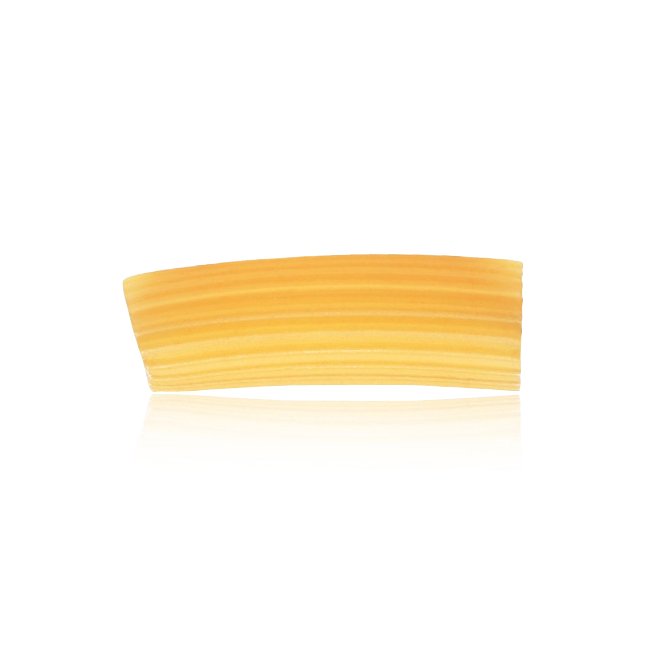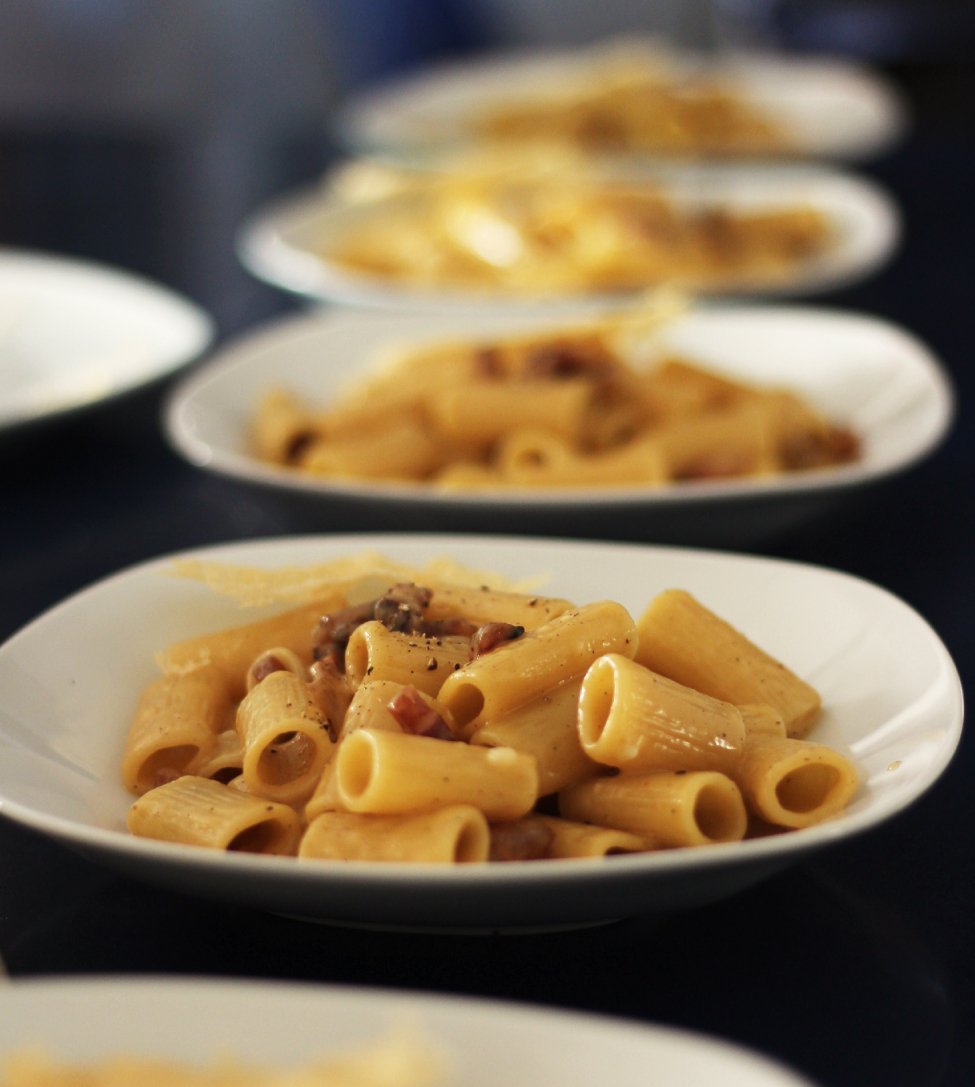
Characteristics, History and Pairings
Rigatoni is a type of short, grooved tubular pasta with a wide diameter, thick and quite large in size. Thanks to these characteristics and the fact that it’s hollow, rigatoni pasta perfectly captures any type of sauce, both on the inside and on the outside, making it an excellent choice for many delicious recipes. It is, in fact, one of the most popular shapes of pasta in Italy.
Cooking Time
12 minutes
Region of Origin
Rigatoni pasta originated in Sicily and Basilicata but its popularity quickly spread to the centre and south of Italy. Because it became popular across the country, it is one of the types of pasta with the most names. It is also known as bombardoni, cannaroni rigati, cannerozzi rigati, maniche, rigatoni romani, trivelli, tufoloni rigati and scaffittuni.
Best Pairings
This pasta shape can exalt the flavours of all types of sauces and is often used in the most classic Italian recipes, such as gricia, amatriciana, carbonara, and cacio e pepe pasta dishes. As a rule, rigatoni pasta pairs perfectly with ragu sauce and is great for oven baked dishes. In consideration of its Sicilian origins, we must mention taganu, a traditional dish from Agrigento, baked in a terracotta dish and traditionally served on the Saturday before Easter. Another typical Sicilian dish with rigatoni is oven baked pasta with aubergines, tomato sauce, and fiordilatte cheese.
Last but not least, rigatoni “alla vaccinara”, a popular traditional Roman dish!
Ingredients
Durum wheat semolina and water.
Average nutritional values for 100 g of raw product
– Energy: 1508 kJ / 356 Kcal
– Fat: 1.5 g
– of which saturates: 0.4 g
– Carbohydrate: 72 g
– of which sugars: 3.0 g
– Fibre: 3.0 g
– Protein: 12 g
– Salt: < 0.01 g
Cooking Tips
Do you cook pasta in a sustainable way? Here are a few tips that can make a difference.
1. Don’t waste water, use only the necessary amount: 1 litre of water for every 100 grammes of dry pasta.
2. Cooking with a lid will save time and gas or electricity and the water will boil sooner.
3. Add the salt when the water starts boiling and add the pasta immediately after.
4. Put the lid back on halfway through the cooking time, switch off the gas (or electric hob) and finish cooking your pasta in the hot water inside the covered pot.
